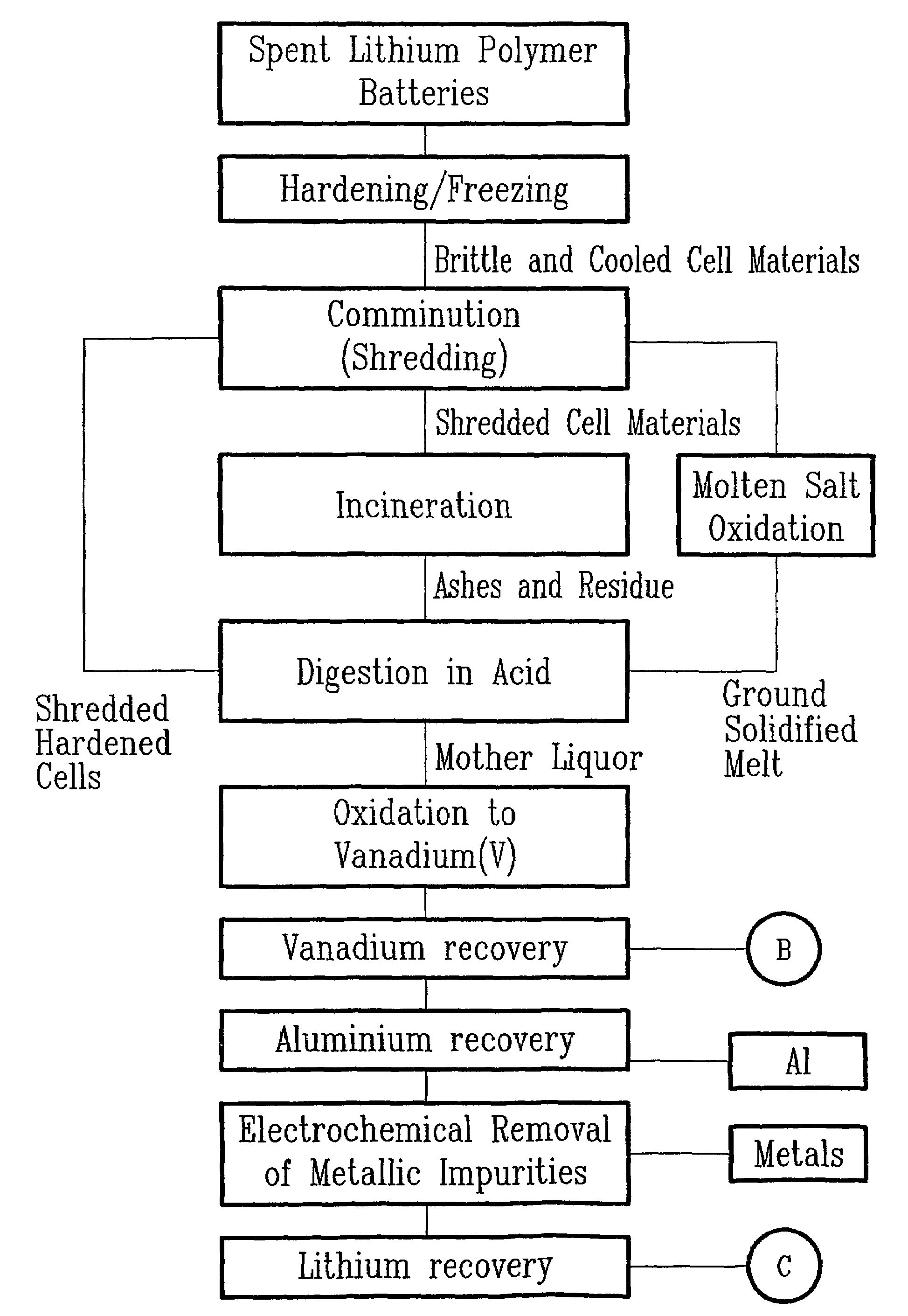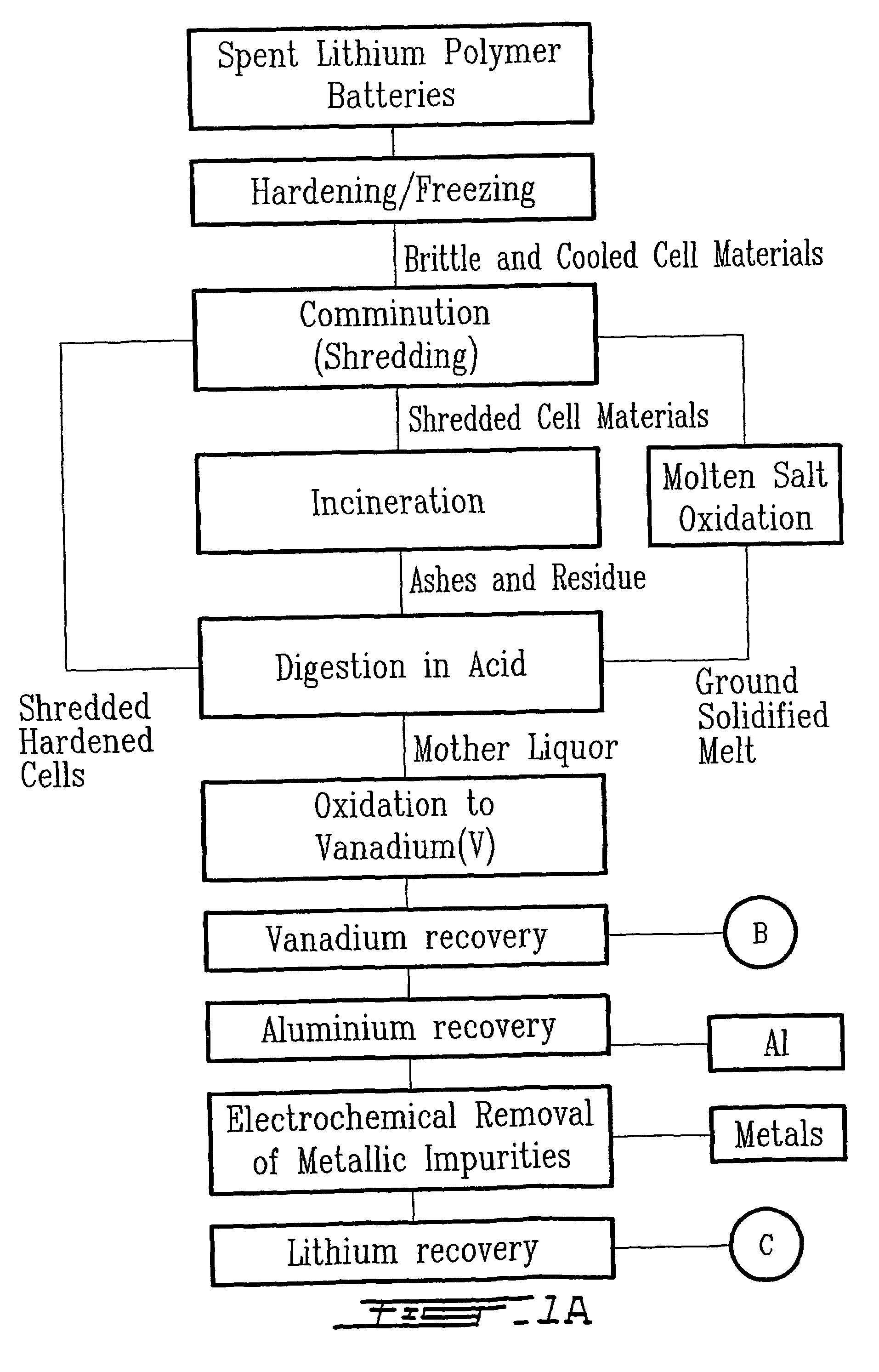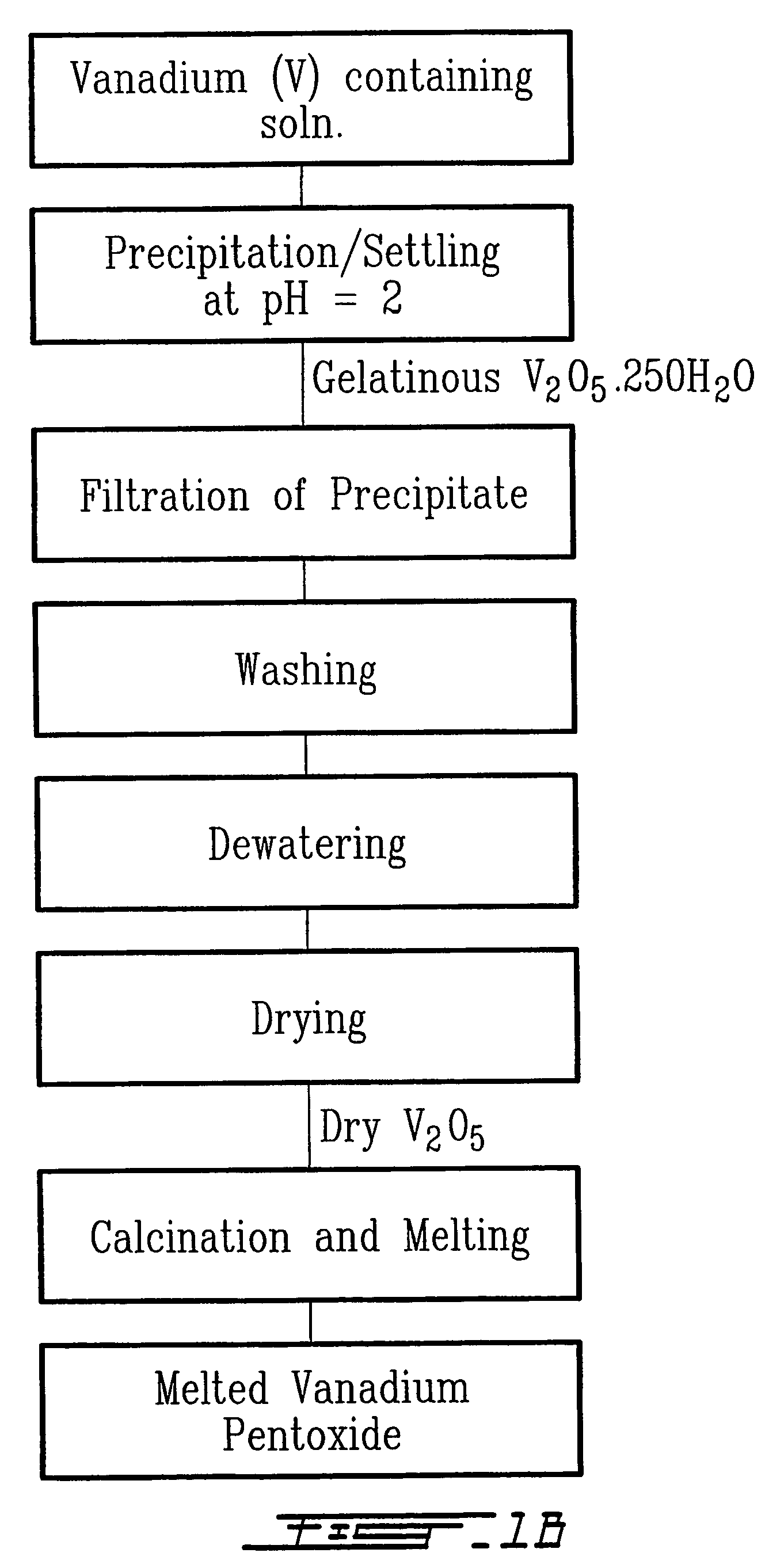Method for recycling spent lithium metal polymer rechargeable batteries and related materials
a lithium metal polymer and rechargeable battery technology, applied in the direction of lithium compounds, niobium compounds, dissolving, etc., can solve the problems of limited commercialization and limited use of lithium metal solid and gel polymer electrolyte batteries
- Summary
- Abstract
- Description
- Claims
- Application Information
AI Technical Summary
Benefits of technology
Problems solved by technology
Method used
Image
Examples
example 1
Incineration of ECs and Digestion of Ashes
[0036]The first step consisted in rendering more brittle and easy to comminute a mass of one kilogram of spent electrochemical cells (ECs) having the chemical composition listed in Table 1. The electrochemical cells exhibited various states of charge. Hardening occurred by immersing the spent ECs directly into liquid argon maintained at 85 K. The dimensionless ratio, denoted rAE, is the mass of liquid argon required per unit mass of ECs and it was calculated by the following equation listed below:
[0037]rAE=mArmEC=cPEC·(TEC-TF)cPAr·(TF-TAr)
where mAr and mEC are the masses expressed in kg of liquid argon and spent ECs respectively, cPAr, and cPEC are the specific heat capacities expressed in J.kg−1.K−1 of liquid argon and spent ECs respectively, and TAr, TEC, and TF are temperatures expressed in kelvin of liquid argon, spent ECs, and the final temperature allowed after immersion respectively. Using liquid argon at 85K and based on the fo...
example 2
Direct Digestion of ECs
[0047]The first step consisted in rendering more brittle and easy to comminute a mass of one kilogram of spent electrochemical cells (ECs) having the chemical composition listed in Table 1. The electrochemical cells exhibited various states of charge. The hardening occurred by immersing the spent ECs directly into liquid argon maintained at 85 K. The dimensionless ratio, denoted rAE, is the mass of liquid argon required per unit mass of ECs and it was calculated by the following equation listed below:
[0048]rAE=mArmEC=cPEC·(TEC-TF)cPAr·(TF-TAr)
Where mAr and mEC are the masses expressed in kg of liquid argon and spent ECs respectively, cPAr and cPEC are the specific heat capacities expressed in J.kg−1.K−1 of liquid argon and spent ECs respectively, and TAr, TEC, and TF are temperatures expressed in kelvin of liquid argon, spent ECs, and the final temperature allowed after immersion respectively. Using liquid argon at 85K and based on the following experime...
example 3
Molten Salt Oxidation of ECs and Digestion of Salts
[0056]The first step consisted to render more brittle and easy to comminute a mass of one kilogram of spent electrochemical cells (ECs) having the chemical composition listed in Table 1. The electrochemical cells exhibited various states of charge. The hardening occurred by immersing the spent ECs directly into liquid argon maintained at 85 K. The dimensionless ratio, denoted rAE, is the mass of liquid argon required per unit mass of ECs and it was calculated by the following equation listed below:
[0057]rAE=mArmEC=cPEC·(TEC-TF)cPAr·(TF-TAr)
Where mAr and mEC are the masses expressed in kg of liquid argon and spent ECs respectively, cPar and cPEC are the specific heat capacities expressed in J.kg−1.K−1 of liquid argon and spent ECs respectively, and TAr, TEC, and TF are temperatures expressed in kelvin of liquid argon, spent ECs, and the final temperature allowed after immersion respectively. Using liquid argon at 85K and based ...
PUM
| Property | Measurement | Unit |
|---|---|---|
| temperature | aaaaa | aaaaa |
| temperature | aaaaa | aaaaa |
| temperature | aaaaa | aaaaa |
Abstract
Description
Claims
Application Information
 Login to View More
Login to View More - R&D
- Intellectual Property
- Life Sciences
- Materials
- Tech Scout
- Unparalleled Data Quality
- Higher Quality Content
- 60% Fewer Hallucinations
Browse by: Latest US Patents, China's latest patents, Technical Efficacy Thesaurus, Application Domain, Technology Topic, Popular Technical Reports.
© 2025 PatSnap. All rights reserved.Legal|Privacy policy|Modern Slavery Act Transparency Statement|Sitemap|About US| Contact US: help@patsnap.com



